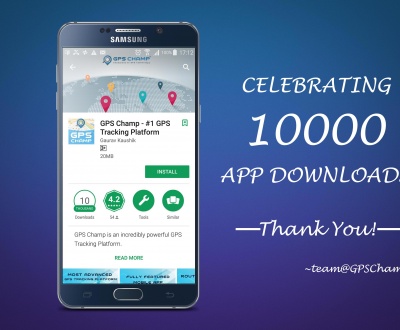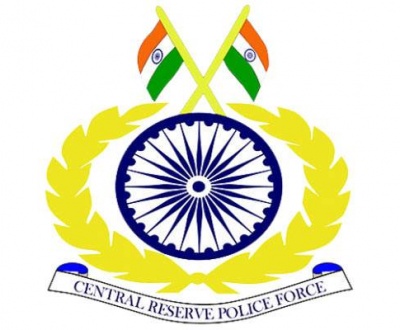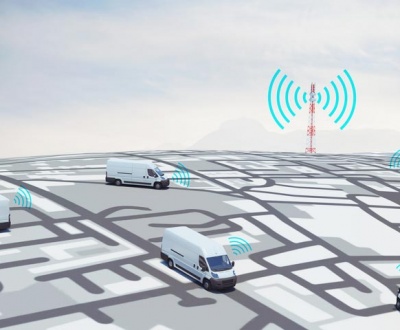GPS Champ launched ARAI Certified AIS 140 GPS Tracker
- June 28, 2018
- GPS Champ, GPS Technology, GPS Tracking Industry

GPS Champ has confirmed the availability of India’s first ARAI-certified AIS-140 compliant vehicle tracking with SOS emergency button solution in line with the Ministry of Road Transport and Highways notification dated 28th November 2016. The AIS-140 regulation, applicable from April 1, 2018, mandates a vehicle tracking device with one or more SOS emergency button(s) in all existing and new public service vehicles. GPS Champ’s trackers is designed keeping in view the Indian operating conditions and aligned to future AIS-140 roadmap with features such as Vehicle Health Monitoring, CCTV Camera, Passenger Information System, etc. It can seamlessly integrate with the governments’ command center and send emergency alerts as directed in the regulation. It is designed for easy installation on the both aftermarket and new vehicles.
In addition to the standard specifications, the product has provision to integrate market-first features like Journey Risk Management for driver safety , easy maintenance, and Vehicle diagnostic tools. Transport operators will have an option to avail GPS Champ’s cloud platform to ensure higher operational efficiency through real-time tracking, route optimization, driver behavior monitoring, etc.
“With AIS-140 vehicle tracking systems being designed and manufactured in India, they embody the ‘Made in India, for India’ promise. We truly believe that the AIS-140 regulation will be vital in making public transport safer for all.†From 1st April 2018, public transport vehicles including taxis and buses are to be mandatorily equipped with GPS devices with a panic SOS button needs to be integrated with the GPS that would act as an emergency switch and would raise an alarm to the nearest police station in case of an emergency .The state transport departments are responsible for putting a system in place for tracking public transport vehicles. When any passenger presses the SOS button, both the transport department and police control rooms will be alerted for taking quick action.â€
In the 44th & 45th CMVR-TSC, Chairman had directed – standardization activities to be initiated on Intelligent Transportation Systems (ITS) – Vehicle Location Tracking, Camera Surveillance System and Emergency Request Button. The committee
intended to extend the above user requirements to all public transportation namely –buses, taxis, etc. The current document covers the requirements for Vehicle Location Tracking with Emergency SOS Button. The other ITS components like PIS, CCTV system,Fare collection etc. are deliberated and would be addressed in later phase and could be added as separate parts to the current document. Based on these directions, the AISC Panel on ITS has prepared this AIS-140 titled,
“Intelligent Transportation Systems (ITS) – Requirements for Public Transport Vehicle Operationâ€The panel has also deliberated and identified the necessary elements for an effective implementation of vehicle level ITS system.

This standard has been prepared by considering inputs received from all stake holders on ITS, mainly –
a. Directions of CMVR-TSC
b. Detailed Specification Document on Vehicle Tracking Devices (dated 4th March 2015, published by MoRTH)
c. Report of Department of Telecom (Telecom Engineering Centre) Automotive
Working Group on M2M enablement in Intelligent Transport System (ITS) This AIS on ITS, has been provisioned for device level approval; including construction and target vehicle level approval. Device level approval is needed to enable retro-fitment of ITS systems on in-use vehicles. This will ensure ITS Backend Control Centre infrastructure already presents with the STUs can be more fully utilized and make the investment in the Backend Control Centre infrastructure more viable.
As per the direction of CMVR-TSC which needed the Communication Protocol and Backend Control Centre requirement for tracking and handling the alerts to be detailed, the same has been addressed in Section 6 & 7, as detailed below.
The devices would transmit data to the Backend Control Centre using 2G/3G/4G wireless connectivity (with SMS fall back) as per the protocol provided in respective sections (Section 6). The data from the devices would travel over the wireless telecom service provider network and finally get delivered at the Backend Control Centre. The detail about Device to Backend Communication Mechanism is mentioned in Section 7. BIS and AIS both have panels which are formulating standards on ITS. It is our belief that taking the AIS route for the 1st implementation would give the faster time for adoption. Experts in the BIS panel and in DIMTS who are working on these subjects have been co-opted and invited to work in the AIS panel to make the AIS as robust as possible. Once implemented and all implementation problems in this emerging technology have been eliminated, BIS standard can be made with further inclusions if any resulting from consultations with the wider stakeholder community. Because of these reasons, we recommend the AIS route for regulation creation and first implementation.
One of the major concerns which has been raised during the panel meetings is on the issue of privacy encroachments by ITS systems. Some overseas member countries of the 1958 agreement have been continuously emphasizing in WP29 forums that the regulated ITS system must not encroach on privacy. Towards this, the panel has submitted a document titled ‘Data Privacy in Transportation ITS’ To help the system developers deal with these issues. Further, system developer can also take guidance
from ‘IS/ISO/TR 12859: 2009 – Intelligent Transport Systems — System Architecture — Privacy Aspects in ITS Standards and Systems’ while developing their systems to meet the requirements of this standard. The Panel and the Automotive Industry
Standards Committee (AISC) responsible for preparation of this standard are given in Annexure-D and Annexure -E respectively.
3.1.1.1 Device shall be capable of obtaining position information using Global Navigation Satellite System (GNSS). GNSS receiver specifications are as follows:
a. Device shall be capable for operating in L and/or S band and include support for NAVIC/IRNSS (Indian Regional Navigation Satellite System) for devices installed on or after 1st April, 2018.
b. The Device shall support GAGAN, the Indian SBAS (Satellite Based Augmentation System)
c. Device shall have a position accuracy of minimum 2.5 m CEP or 6 m2DRMS
d. Device shall have an acquisition sensitivity of minimum (-) 148 dBm
e. Device shall have an tracking sensitivity of minimum (-) 165 dBm
f. Device shall have an internal antenna; however if in case of Integrated systems with vehicle / aftermarket OEM approved kits if the fitment location prevents the internal antenna from functioning, then external antenna shall be provided.
3.1.1.2 Device shall support standard minimum I/Os as mentioned: 4 Digital, 2 Analogue and 1 Serial Communication (e.g. RS232) for interfacing external systems (E.g. Digital input for Emergency request button interfacing).
3.1.1.3 Device shall be capable of transmitting data to Backend Control Server (Government authorized server) via Wide Area (Mobile) Communications network (GSM/GPRS) as per Communication Protocol in Section 4.
3.1.1.4 Device shall be capable of transmitting Position, Velocity and Time (PVT data) along with heading (direction of travel) to a Backend Control Server (Government authorized server) at configurable frequency as per Communication Protocol of Section 4. The fixed frequency shall be user configurable, minimum frequency shall be 5 sec during vehicle operation and not less than 10 minutes in sleep/IGN OFF) as per the protocol defined in Communication Protocol of Section 4.
3.1.1.5 Device shall be capable of transmitting data to minimum 2 different IP addresses (1 IP address for regulatory purpose (PVT data) and 1 IP address for Emergency response system other than the IP’s required for Operational purpose.
3.1.1.6 On pressing of Emergency button, the system implementing VLTÂ function shall send emergency Alert (Alert ID 10 as mentioned in Subsection
4.2.1 of Communication Protocol Section 4) to the configured IP address(s) as per the Communication Protocol mentioned in Section 4. In the absence of GPRS network, the emergency alert shall be sent as SMS message along with vehicle location data to configured control center number(s). The SMS shall consist parameters as given in Sub-section
3.1.1.7 Device shall have an internal back-up battery to support 4 hours of normal operations (to be tested for positional record transmission at a frequency of 60 sec)
3.1.1.8 Device shall be capable of transmitting alerts to the Backend Control Server (Government authorized server) directly. The applicable list of alerts is given in Section 4.2 (Alert ID 3 to 12) of Section 4.
3.1.1.9 Device shall support over the air software and configuration update.
3.1.1.10 Device shall support basic standard configuration (Mobile communications network settings, Backend Control Server (Government authorized server) details, data frequencies, alert thresholds etc.) as per configuration specification defined in Section 4.
3.1.1.11 Device shall support store and forward mechanism for all type of data (periodic data and alerts) meant for backend transmission. The system shall store data in internal memory during communication network unavailability and transmit the data when the connection resumes in last in first out (LIFO) manner. The live data shall be given higher priority for
transmission than back log (stored data) at any point in time.
3.1.1.12 The Device shall have a unique identifier for identifying the VLT device and data. The unique ID shall be stored in a read only memory area so that it cannot be altered or overwritten by any person. The unique identifier may be Vehicle Identification number or IMEI (International Mobile Station Equipment Identity) Number.
3.1.1.13 Device shall store/write the registration number of the vehicle in the internal nonvolatile memory.
3.1.1.14 Device shall have an Embedded SIM.
3.1.1.15 Device shall be designed to operate between 8VDC and 32VDC using vehicle battery input voltage range 12 /24Volts.
3.1.1.16 Device shall have a sleep mode current ≤ 20 mA (If the function is implemented in a dedicated system/device).
3.1.1.17 Device shall support any operational GNSS system with 12 (minimum)acquisition channels.
3.1.1.18 The Device shall support:
• Location on GPRS/SMS
• Non-volatile memory to store min 40,000 positional log
• Configurable backup SMS facility in case of GPRS failure
• Capability to send serving and adjacent cell ID as well as network measurement report (NMR)
Visitors reached here while searching for AIS 140, arai approved gps tracker, gps tracker india, gps tracking system
Welcome to Our Blog!
We love to share the latest happenings of GPS Industry, Technology Advancements, Latest updates on our Devices & Software. If you find something interesting, don't forget to share it :)
Request a free quote
We offer advanced GPS Tracking Solutions that help businesses increase their ROI drastically in order to effectively managing their Assets.Â
Subscribe to our newsletter!
More from our blog
See all postsRecent Posts
- Celebrating 10000 GPSChamp App Downloads! December 25, 2018
- Your New Vacation Companion – GPS Safety Device December 5, 2018
- GPSChamp is now official supplier of GPS Trackers to CRPF December 3, 2018

















